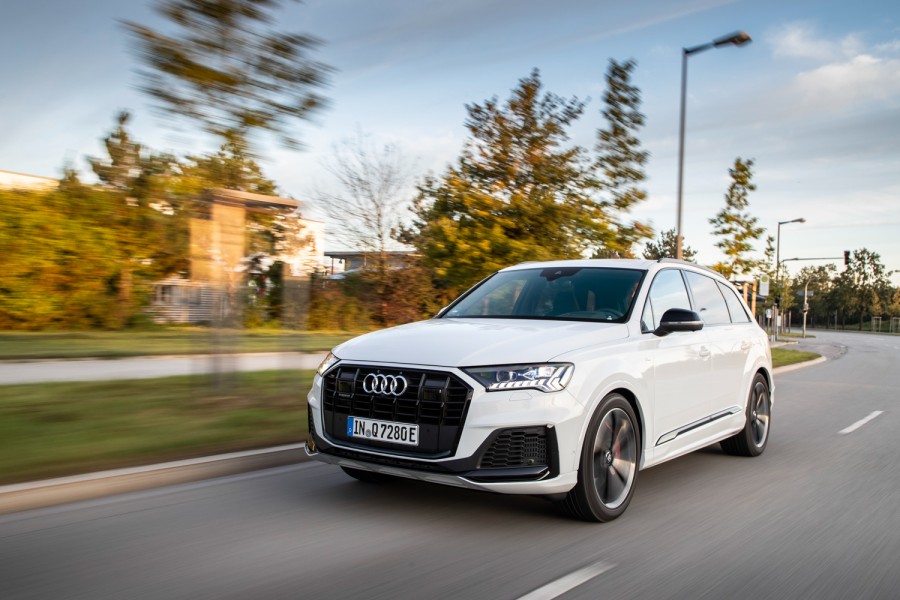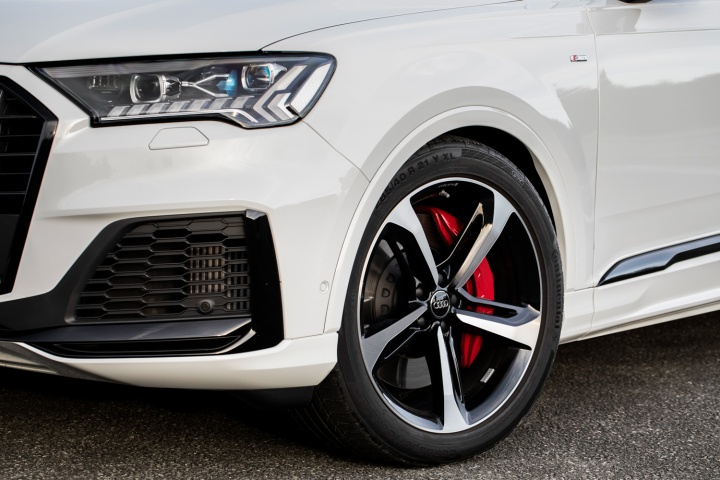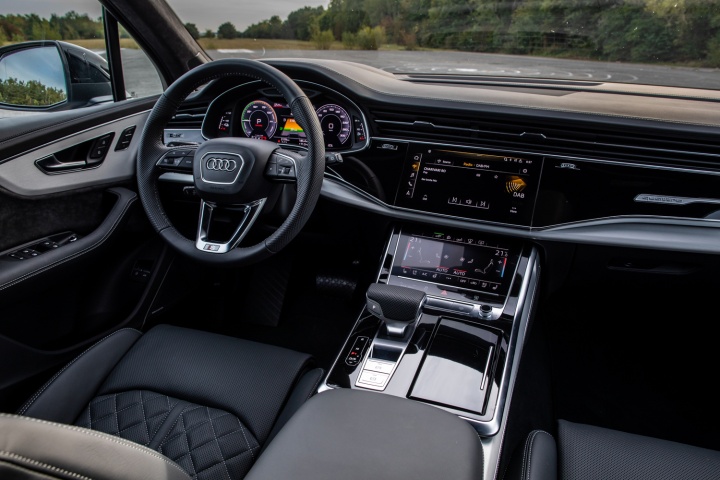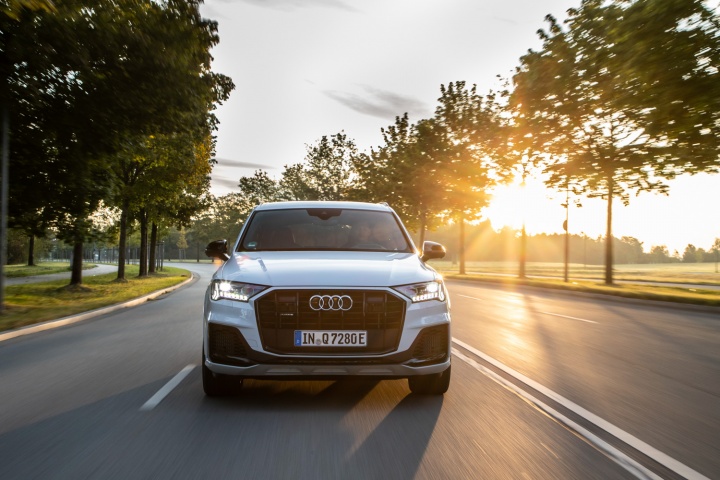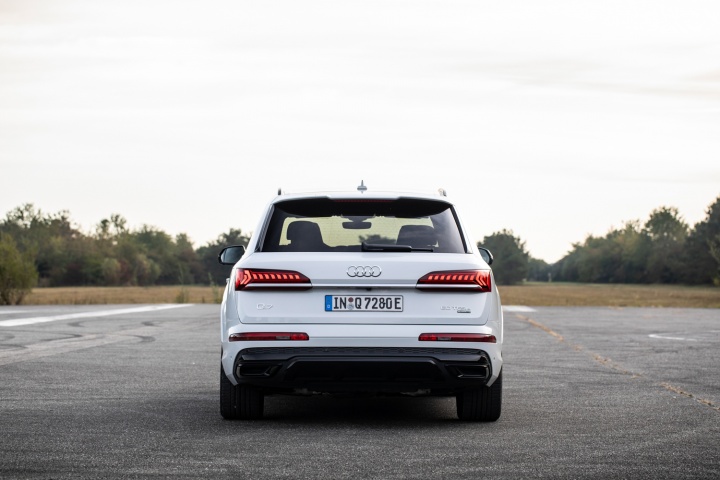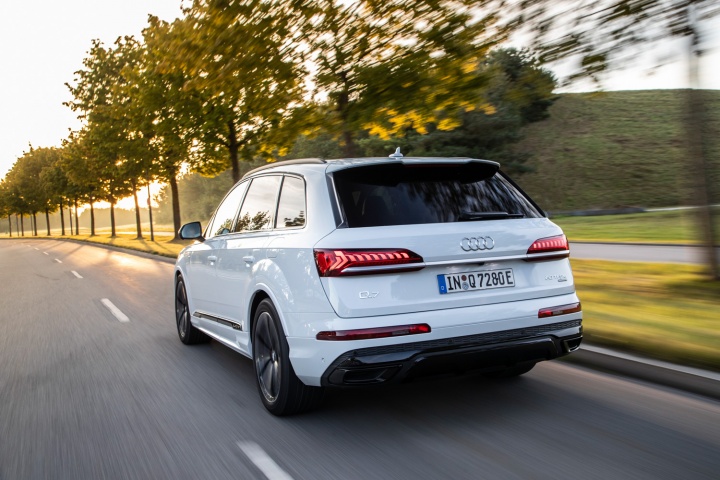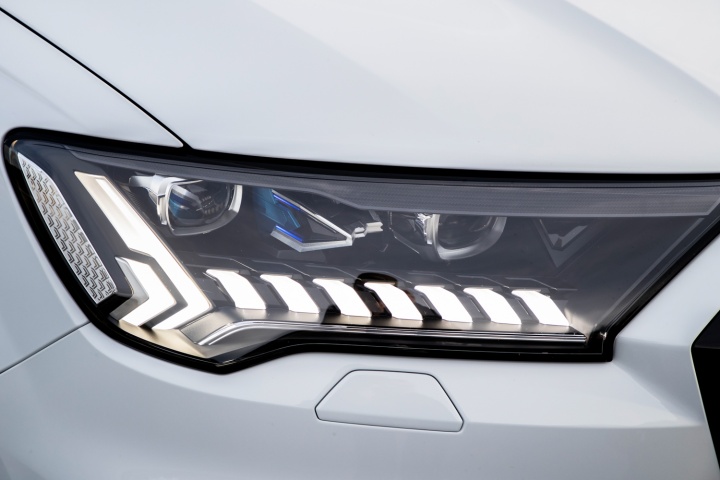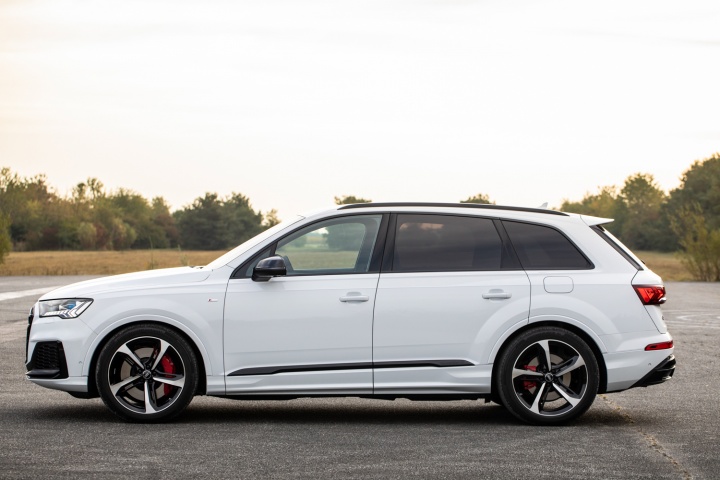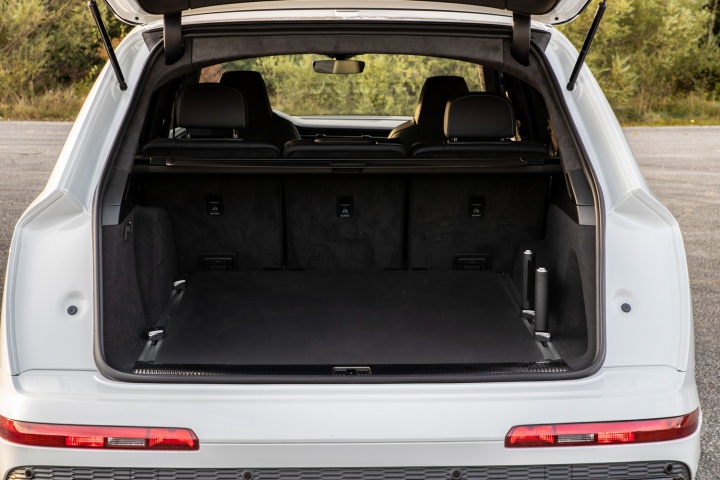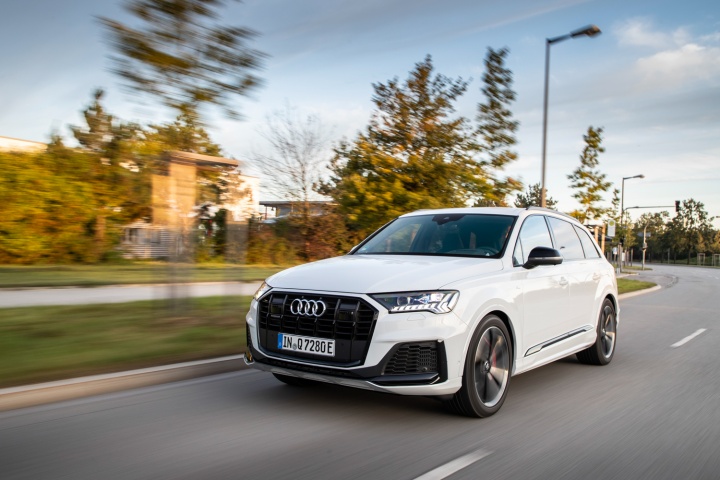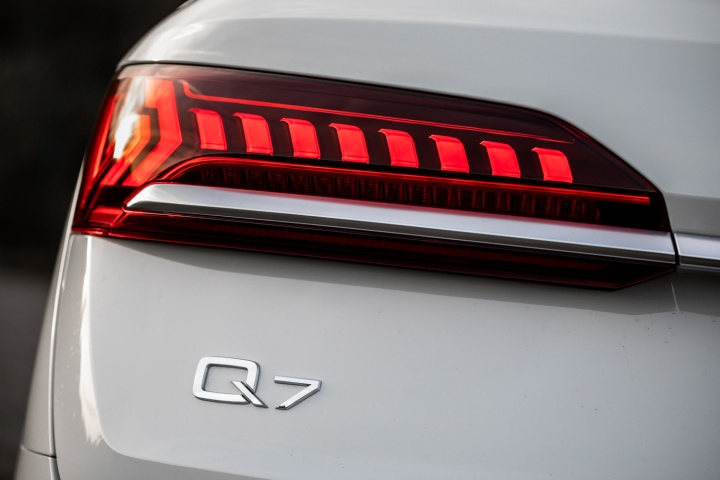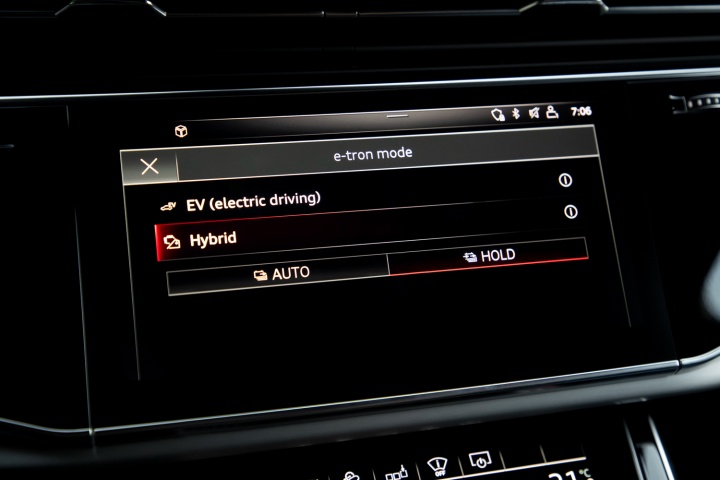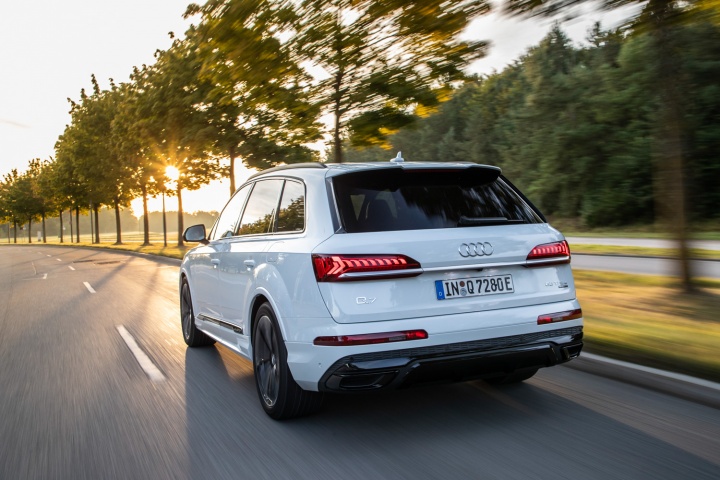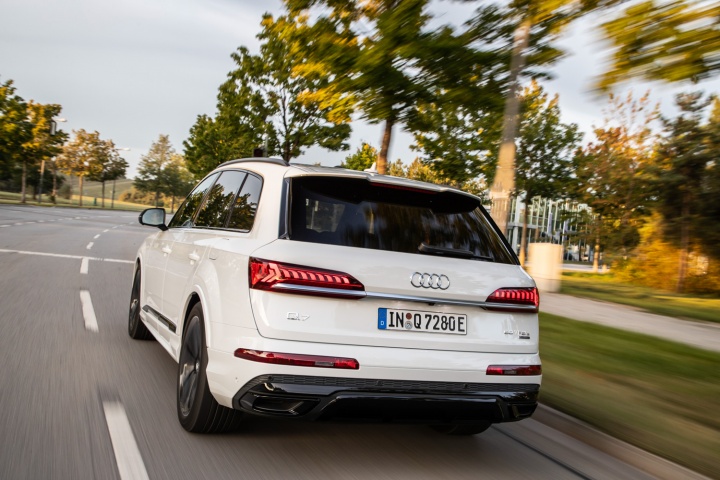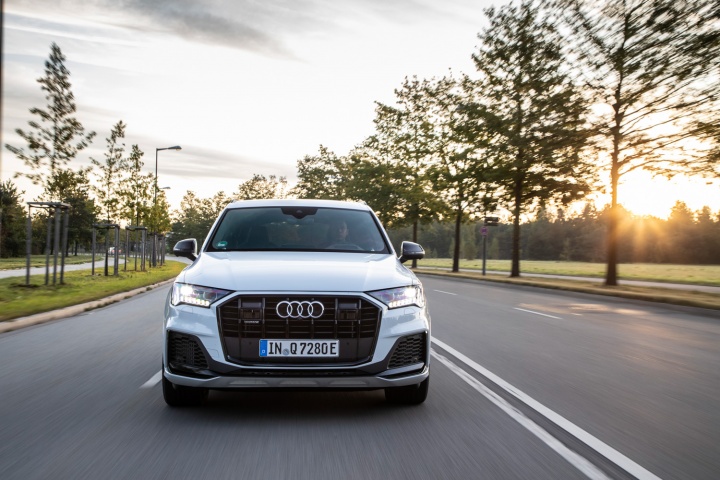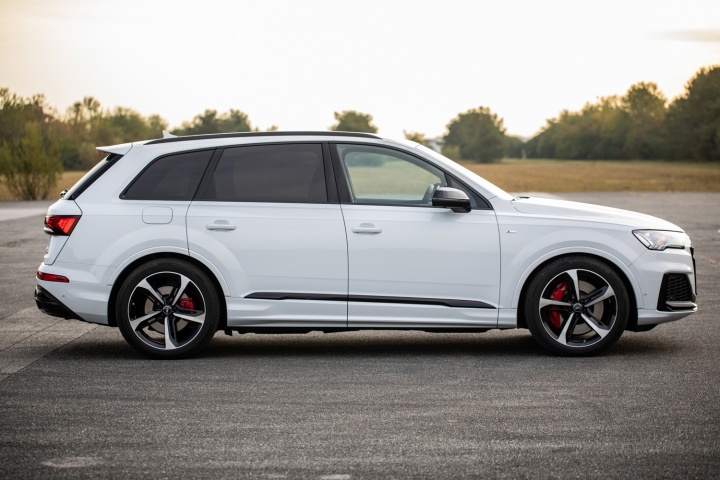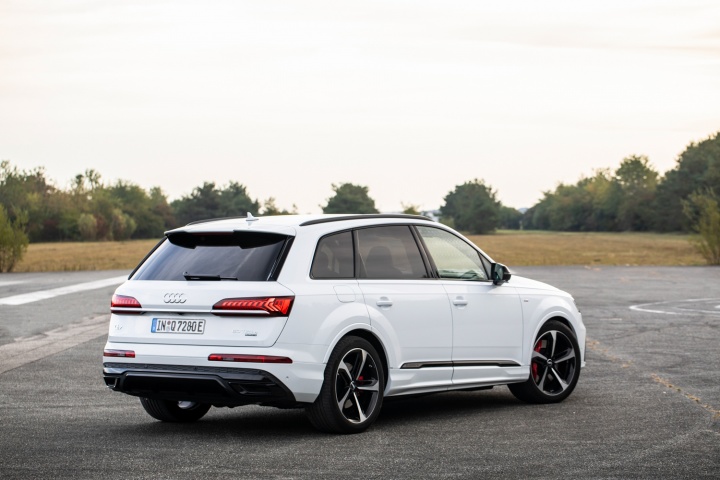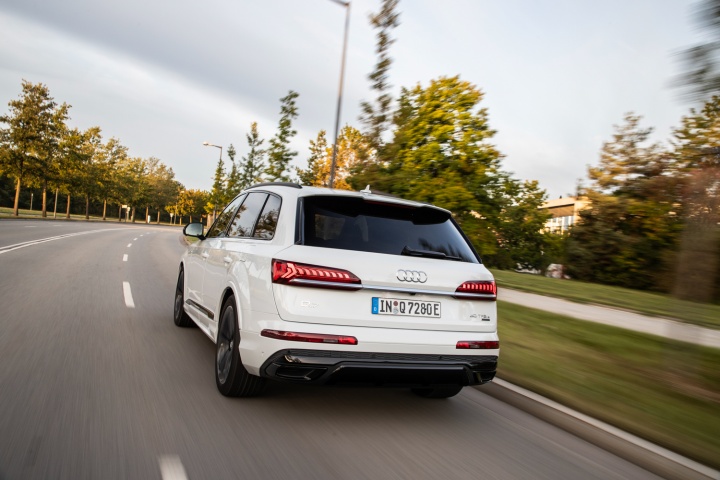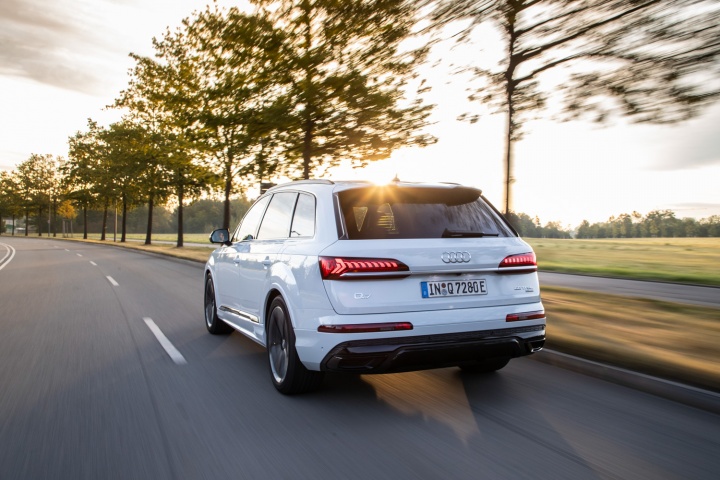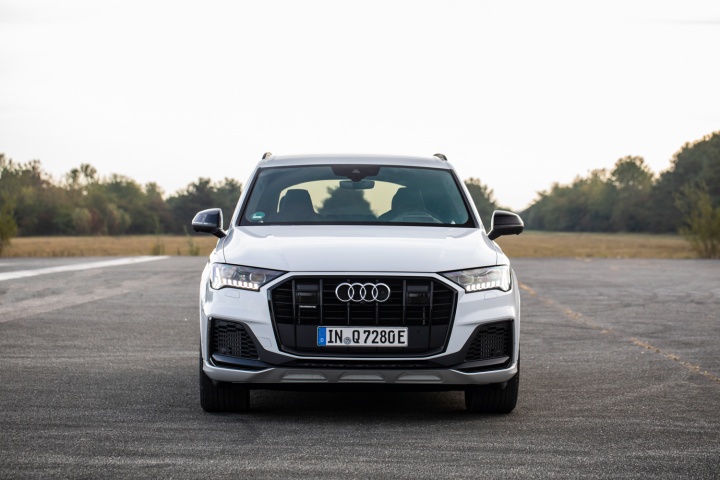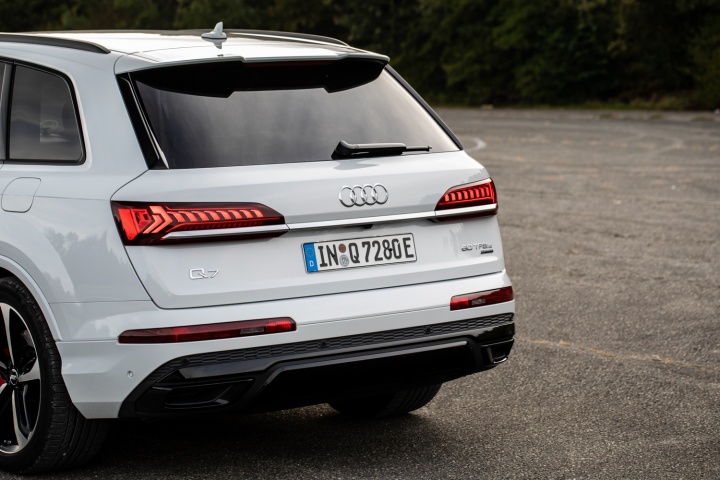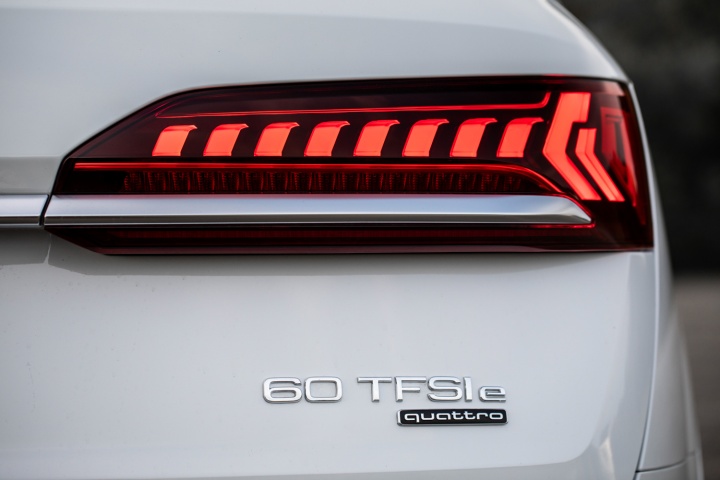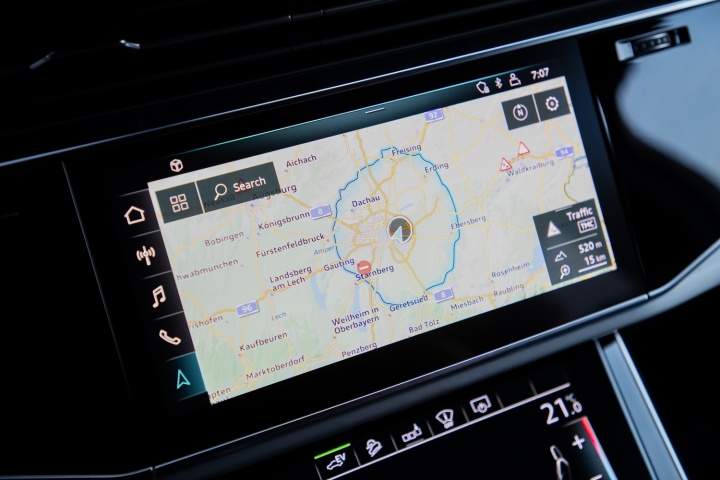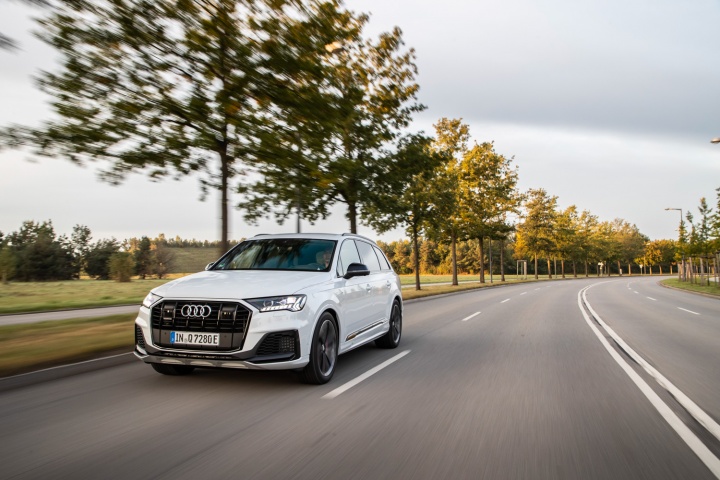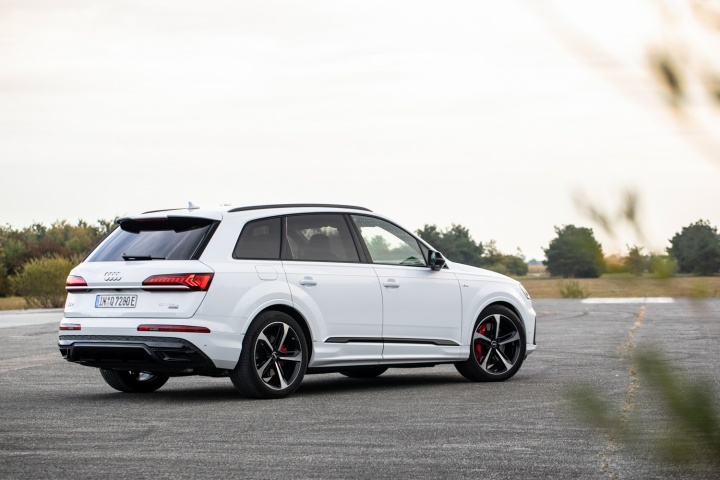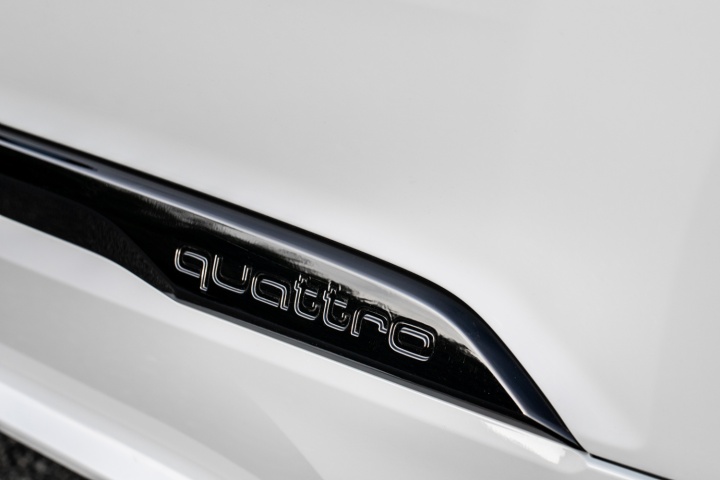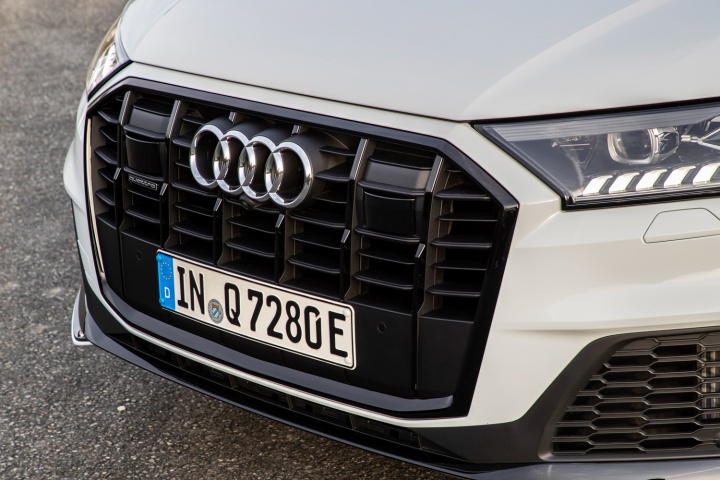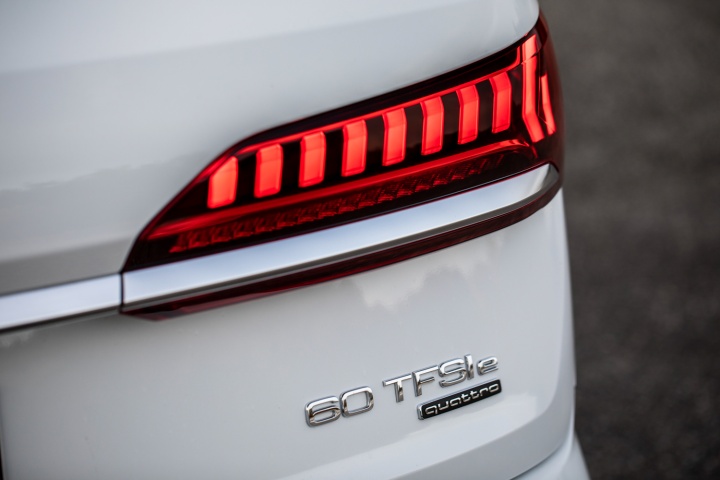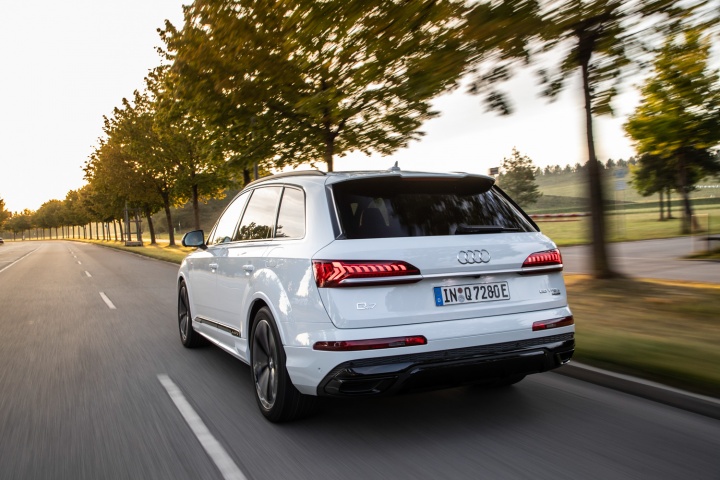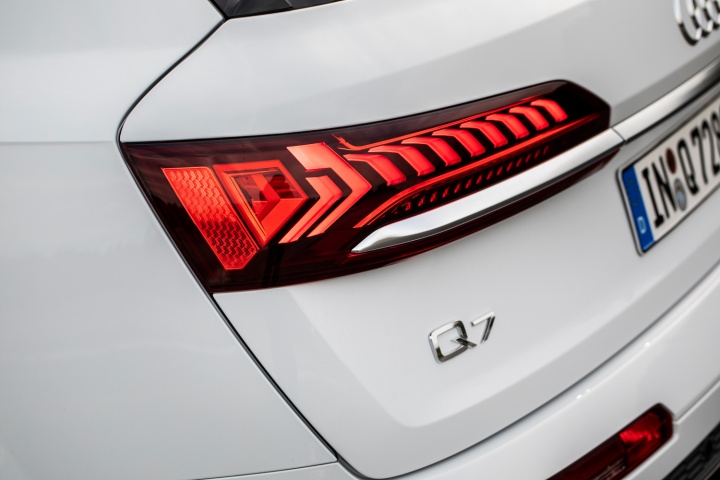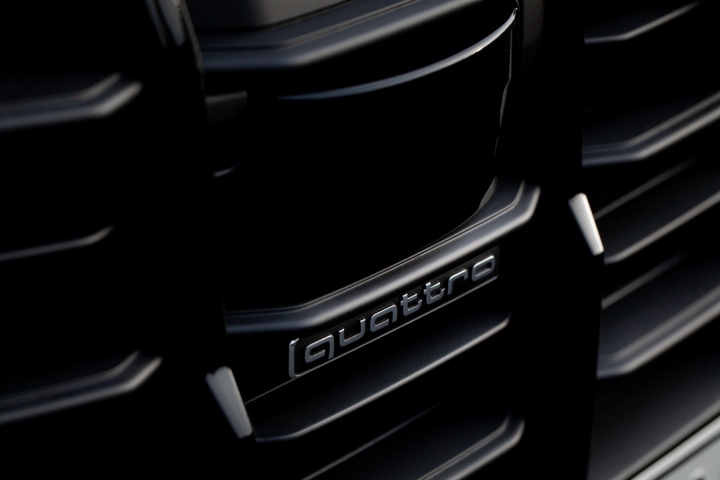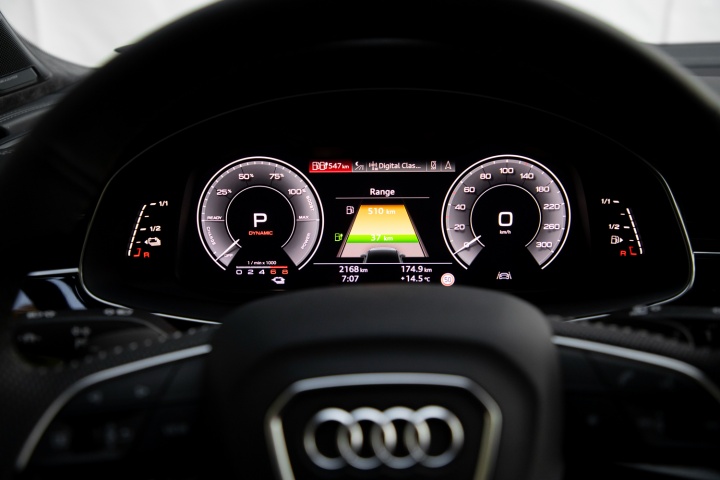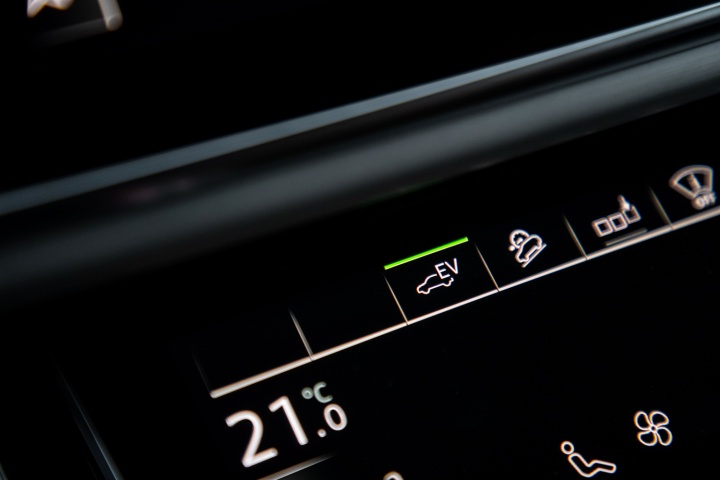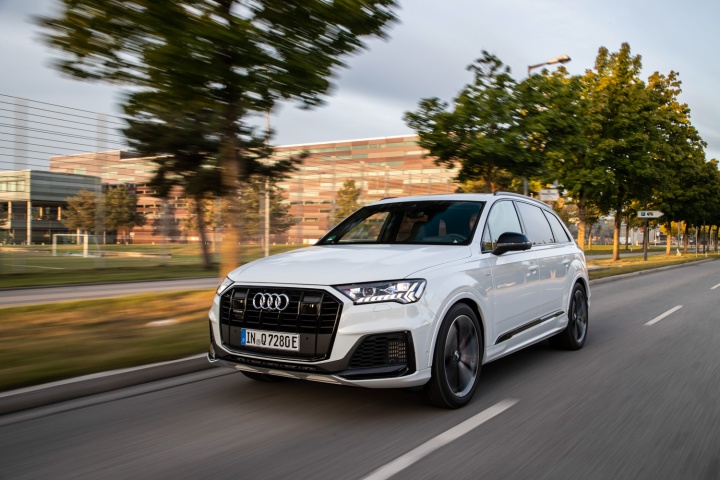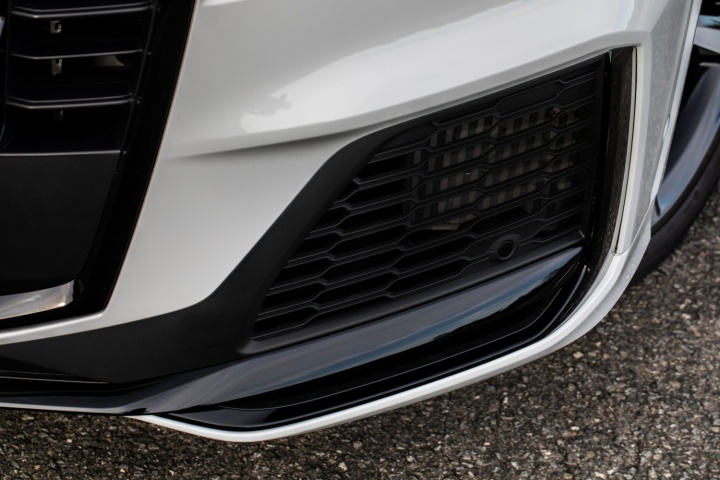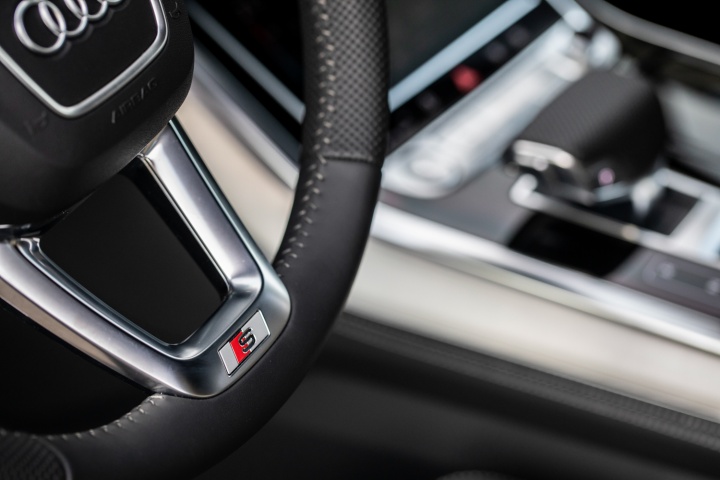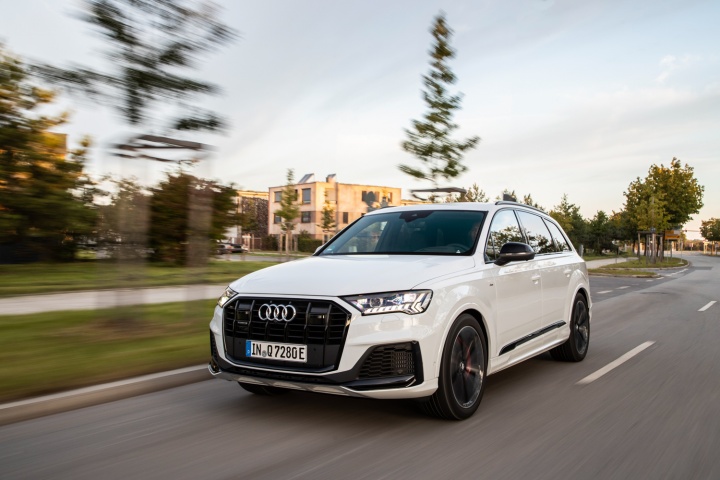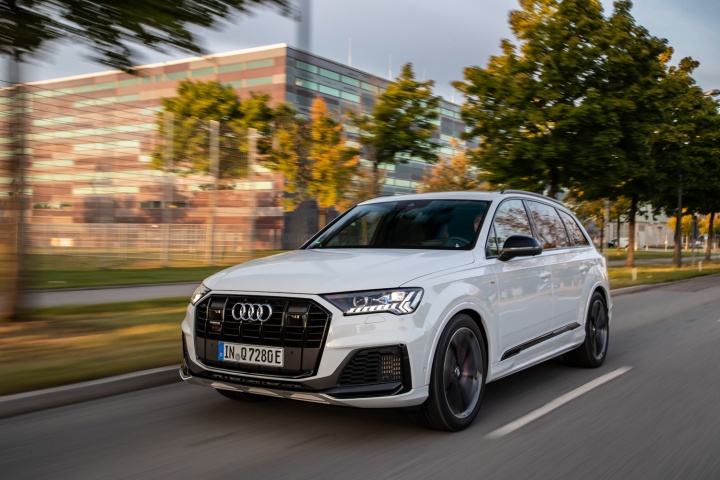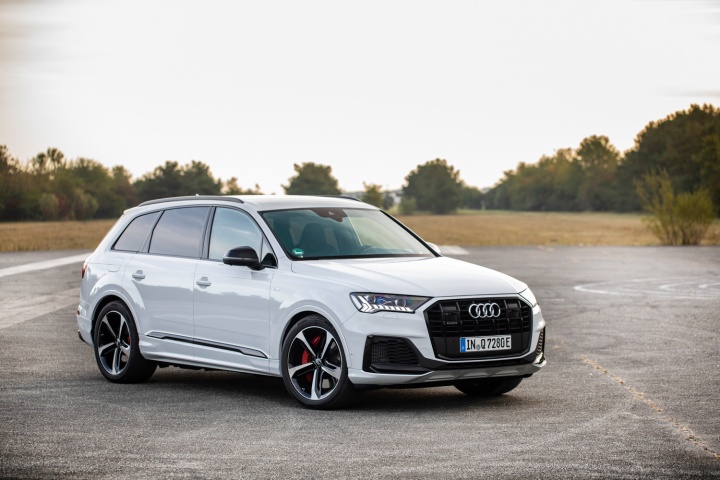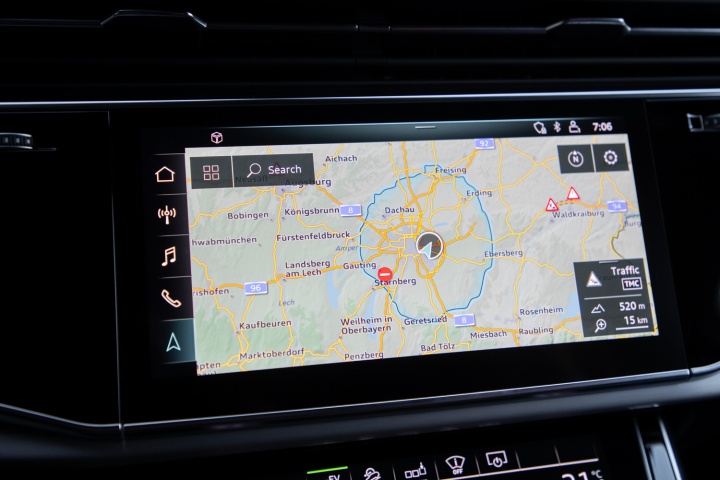This is the plug-in hybrid (PHEV) version of the large Audi Q7 luxury SUV, and there are two flavours available to you - the Q7 55 TFSI e quattro and then the Q7 60 TFSI e quattro.
55 or 60?
Whichever one you go for, the Q7 PHEV (it's the little 'e' after TFSI which denotes it's an Audi hybrid) uses a 3.0-litre TFSI V6 petrol engine rated at 340hp and 450Nm. This is augmented by an electric motor and 17.3kWh lithium-ion battery pack, the only difference between the two models being how much electric power and torque they can generate. The 55 TFSI e's powertrain will serve up peaks of 381hp and 600Nm, while the 60 TFSI e goes a little further to maximums of 456hp and 700Nm. Power flows to all four wheels (hence 'quattro') via an eight-speed Tiptronic gearbox.
According to WLTP figures, both PHEV Q7s do a best of 2.8 litres/100km (100.9mpg) with CO2 emissions of just 64g/km, while both can do up to 43km on electric power alone (and they can both do up to 135km/h in pure EV running, as well). So the differences between them will purely be price, with the 60 being a little more expensive, and performance - the 55 TFSI e runs 0-100km/h in 5.9 seconds, while the 60 TFSI e will trim that time to 5.7 seconds. Both cars are said to be pegged to 240km/h flat out.
Only five seats
The TFSI e models use two modes of hybrid driving, which are Auto (where it works out whether to use petrol, electric or both to motor along, according to the satnav and the power demands) and Hold (where it maintains battery charge for EV-driving later on in the journey). In pure EV running, it will emit a noise through its Acoustic Vehicle Alerting System (AVAS) at speeds of up to 20km/h, to let pedestrians know that it is on the move. Visually, there's very little to mark these PHEV twins out as being different to the rest of the Q7 range, apart from the boot badging and fuel/electric filler flaps on both sides of the bodywork, but sadly the packaging of the battery means these are still five-seat Q7s, not the full seven-seaters. That means the likes of the Volvo XC90 T8 still has the edge for practicality.

